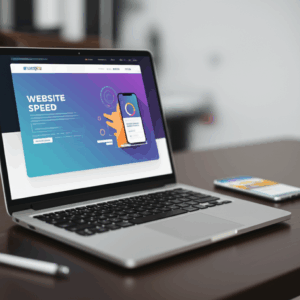- Why Website Speed Matters for User Experience
- Website Speed and its Impact on SEO
- Optimizing Website Speed for Better SEO
- The Relationship between Website Speed and Sales
- Boosting Sales with Improved Website Speed
- Website Speed: A Continuous Effort
Website Speed: Crucial for SEO & Sales
Website speed is a critical factor for both search engine optimization (SEO) and sales. In today’s fast-paced digital world, users expect websites to load quickly and efficiently. A slow website can lead to a poor user experience, increased bounce rates, and ultimately, lost revenue. This article will delve into why website speed matters, how it impacts SEO and sales, and practical steps you can take to optimize your website for optimal performance.
Why Website Speed Matters for User Experience

User experience is paramount in the online world. A slow-loading website can frustrate users and lead to a negative perception of your brand. Imagine waiting several seconds for a page to load – chances are, you’ll abandon the site and look for alternatives. This behavior is not uncommon; studies have shown that even a one-second delay in page load time can result in a significant drop in conversions. A fast website, on the other hand, provides a seamless browsing experience, encouraging users to stay longer, explore more pages, and ultimately, convert into customers.
Website Speed and its Impact on SEO
Beyond user experience, website speed is a crucial ranking factor for search engines like Google. Google prioritizes websites that offer a good user experience, and site speed is a key component of that. A slow website can negatively impact your search engine rankings, making it harder for potential customers to find you. Google’s algorithm considers various speed metrics, including First Contentful Paint (FCP) and Time to Interactive (TTI), to assess a website’s performance. By optimizing your website speed, you can improve your search engine rankings, increase organic traffic, and reach a wider audience.
Optimizing Website Speed for Better SEO
Optimizing your website speed for SEO involves a multi-faceted approach. Here are some key strategies:
Image Optimization: Compressing images without sacrificing quality significantly reduces page load time. Tools like TinyPNG and ShortPixel can help optimize images for web use.
Browser Caching: Leveraging browser caching allows returning visitors to load your website faster by storing static assets like images and CSS files on their local devices.
Content Delivery Network (CDN): A CDN distributes your website’s content across multiple servers geographically closer to your users, reducing latency and improving loading times.
Minify CSS and JavaScript: Removing unnecessary characters and whitespace from your CSS and JavaScript files can reduce file sizes and improve download speeds.
Mobile Optimization: With the increasing prevalence of mobile browsing, ensuring your website is mobile-friendly and loads quickly on mobile devices is essential for both SEO and user experience. Consider using responsive design and AMP (Accelerated Mobile Pages) to optimize for mobile.
The Relationship between Website Speed and Sales
The correlation between website speed and sales is undeniable. A faster website leads to a better user experience, which in turn can significantly impact your conversion rates. When users can quickly and easily navigate your website, find the information they need, and complete transactions without delays, they are more likely to make a purchase. Conversely, a slow website can frustrate potential customers, leading to abandoned carts and lost sales. Investing in website speed optimization is essentially investing in the growth of your business.
Boosting Sales with Improved Website Speed
Improving website speed isn’t just about technical tweaks; it’s a strategic investment in your business’s bottom line. Here’s how faster loading times can directly translate to increased sales:
Reduced Bounce Rate: A faster website keeps users engaged, reducing the likelihood of them leaving before making a purchase.
Improved Conversion Rates: A seamless and efficient browsing experience encourages users to complete desired actions, leading to higher conversion rates.
Enhanced Customer Satisfaction: A positive user experience fosters customer loyalty and encourages repeat business.
* Increased Mobile Conversions: Optimizing for mobile speed is crucial for capturing the growing mobile market and boosting sales from mobile users.
Website Speed: A Continuous Effort
Optimizing website speed is not a one-time fix; it requires ongoing monitoring and maintenance. Regularly test your website speed using tools like Google PageSpeed Insights and GTmetrix to identify areas for improvement. Stay updated on the latest best practices and technologies to ensure your website continues to perform optimally. By prioritizing website speed, you invest in a better user experience, improved SEO, and ultimately, increased sales. It’s a crucial element for success in today’s competitive online landscape.











Leave a Reply